GE TBG22PABWW Handleiding
Bekijk gratis de handleiding van GE TBG22PABWW (68 pagina’s), behorend tot de categorie Koelkast. Deze gids werd als nuttig beoordeeld door 73 mensen en kreeg gemiddeld 3.5 sterren uit 37 reviews. Heb je een vraag over GE TBG22PABWW of wil je andere gebruikers van dit product iets vragen? Stel een vraag
Pagina 1/68

UseandCare & Installation Guide
GE Appliances
English Version.................................. 2
Version française.......................... 23
Versión en español...................... 45
Safety Instructions ........................ 2
Operating Instructions, Tips
Accessories ..................................................... 5
Anti-Moisture Switch.................................... 3
Automatic Icemaker ..................................... 8
Freezer Compartment .................................. 7
Icemaker Accessory Kit ............................... 8
Shelves ........................................................ 4, 5
Storage Drawers ....................................... 6, 7
Temperature Controls .................................. 3
Care and Cleaning
Behind Refrigerator....................................... 9
Cleaning—Inside and Outside..................... 9
Drawer and Cover Removal................. 9, 10
Light Bulb Replacement............................ 10
Under Refrigerator ........................................ 9
Problem Solver ...................... 20, 21
Normal Operating Sounds........................ 20
Preparation
Clearances .................................................... 11
Dimensions................................................... 11
Rollers ............................................................ 11
Vacation and Moving................................. 11
Water Supply to Icemaker........................ 11
Installation ................................. 12–19
Earthing.................................................. 12, 13
Electrical Requirements..................... 12, 13
Fitting a Different Plug............................... 13
Great Britain and Ireland ........................... 13
Mains Lead Replacement .................... 2, 13
Reversing the Door Swing ................ 16–19
Water Line Installation ....................... 14, 15
Model and Serial Numbers ......................... 2
Refrigerator
Réfrigérateur
Frigorífico
Top-Mount No-Frost 18-25
Sans givre à compartiment supérieur 18-25
Montaje superior sin escarcha 18-25
Export

HELP US HELP YOU…
Read this guide carefully. Write down the model and serial numbers.
It is intended to help you operate and maintain your new refrigerator
properly. Keep it handy for answers to your questions.
If you received a damaged refrigerator…
Immediately contact the dealer (or builder) that sold you
the refrigerator.
Save time and money. Before you request service…
Check the Problem Solver. It lists minor operating problems that you
can correct yourself.
You’ll see them on a label on the left side, near the top of the fresh
food compartment.
Model Number
Serial Number
Use these model and serial numbers in any correspondence or service
calls concerning your refrigerator.
WARNING—When using this appliance, always
exercise basic safety precautions, including the
following:
• Use this appliance only for its intended purpose as described
in this Use and Care Guide.
• This refrigerator must be properly installed in accordance
with the Installation Instructions before it is used. See
grounding instructions in the Installation section.
WARNING: Connect to potable water supply
only.
• Never unplug your refrigerator by pulling on the power
cord. Always grip plug rmly and pull straight out from
the outlet.
• Repair or replace immediately all electric service cords
that have become frayed or otherwise damaged. Do not use
a cord that shows cracks or abrasion damage along its length
or at either the plug or appliance end.
• When moving your refrigerator away from the wall, be
careful not to roll over or damage the power cord.
• Do not allow children to climb, stand or hang on the shelves
in the refrigerator. They could damage the refrigerator and
seriously injure themselves.
• If your old refrigerator is still around the house
but not in use, be sure to remove the doors. This
will reduce the possibility of danger to children.
• After your refrigerator is in operation, do not touch the
cold surfaces in the frozen food storage compartment,
particularly when hands are damp or wet. Skin may adhere
to these extremely cold surfaces.
• If your refrigerator has an automatic icemaker, avoid
contact with the moving parts of the ejector mechanism, or
with the heating element that releases the cubes. Do not
place ngers or hands on the automatic icemaking mechanism
while the refrigerator is plugged in.
• Don’t refreeze frozen foods which have thawed completely.
Food safety experts say:
‘‘…You may safely refreeze frozen foods that have thawed if
they still contain ice crystals or if they are still cold—below 4°C.
‘‘…Thawed ground meats, poultry or sh that have any o-odor
or o-color should not be refrozen and should not be eaten.
Thawed ice cream should be discarded. If the odor or color of
any food is poor or questionable, get rid of it. The food may be
dangerous to eat.
‘‘…Even partial thawing and refreezing reduces the eating
quality of foods, particularly fruits, vegetables and prepared
foods. The eating quality of red meats is aected less than that of
many other foods. Use refrozen foods as soon as possible to save
as much of their eating quality as you can.’’
• Unplug your refrigerator before cleaning and making
repairs. NOTE: We strongly recommend that any servicing
be performed by a qualied individual.
• Before replacing a burned-out light bulb, the refrigerator
should be unplugged in order to avoid contact with a live wire
lament. (A burned-out light bulb may break when being
replaced.) Turning control to “0” position does notNOTE:
remove power to the light circuit.
• Do not store or use gasoline or other ammable vapors and
liquids in the vicinity of this or any other appliance.
Mains lead replacement
If the mains lead on your refrigerator needs replacing at any time,
it must be replaced by a special lead which is obtainable from
your local dealer. A charge will be made for the replacement of
the mains lead if you have damaged the lead.
SAVE THESE
INSTRUCTIONS
IMPORTANT SAFETY INSTRUCTIONS
Read all instructions before using this appliance.
2

TEMPERATURE CONTROLS
Important Safety Instructions Temperature Controls
How to Test Temperatures No Defrosting
Use the milk test for the fresh food compartment. Place a
container of milk on the top shelf in the fresh food compartment.
Check it a day later. If the milk is too warm or too cold, adjust the
temperature controls.
Use the ice cream test for the fr compartment.ozen food storage
Place a container of ice cream in the center of the frozen food storage
compartment. Check it after a day. If it’s too hard or too soft, adjust
the temperature controls.
After changing the controls, always allow 24 hours for the
refrigerator to reach the temperature you have set.
It is not necessary to defrost the frozen food storage compartment
or fresh food compartment. Although your refrigerator is designed
and equipped to defrost itself automatically, some frost on packages
is normal.
3
Fresh Food Frozen Food
Initially set both controls at “4.”
The fresh food control moves
a damper to change the amount
of cold air that moves from the
frozen food compartment to the
fresh food compartment.
The frozen food control
maintains the temperatures
throughout the frozen food
storage compartment. Moving
the frozen food control to “0”
stops cooling in both areas—
fresh food and frozen food
storage compartments—but
does not shut o power to
the refrigerator.
Eervescent drinks should not be stored in the frozen food storage
compartment. For fastest food freezing, set the frozen food control at
position “7.” Since the compressor will run 100% of the time at this
setting, don’t forget to turn back the setting after the food is frozen.
0
7
5
3
1
6
4
2
7
1
4
Cold air
from frozen
food storage
compartment
Side View
Damper
(coldest setting)
(warmest setting)
Damper
Ambient Room Temperature Limits Anti-Moisture Switch
This refrigerator is designed to operate in ambient temperatures
specified by its Temperature Class which is marked on the rating plate.
Temperature Symbol Ambient Temperature
Class Maximum Minimum
Extended-
Temperate SN 32°C 10°C
Temperate N 32°C 16°C
Subtropical ST 38°C 18°C
Tropical T 43°C 18°C
NOTE: Internal temperature may be aected by such factors as the
location of the refrigerator, ambient temperature and frequency of
door openings. Adjust temperature controls as required to compensate
for these factors.
The anti-moisture switch is located on the
temperature control panel. To reduce the amount
of electricity required to operate your refrigerator,
push switch to the left.
This turns o the unit in your refrigerator that
prevents moisture from forming on the inside or
outside surfaces.
With this unit turned o, moisture may form on the
inside or outside of your refrigerator, especially when the weather is
humid. The humidity is most likely to be high in the summer, in the
early morning hours, and in homes which are not air conditioned.
Over an extended period of time, moisture that forms on the
refrigerator surface may cause deterioration of the paint nish. It will
be important to protect the nish by using appliance polish wax as
described in the Care and Cleaning section.
The cost to operate the low-wattage unit is about the same as it costs
to use two night lights.
When you move the anti-moisture switch to the right, low wattage
electricity ows through the unit and warms the outside of the
refrigerator and the top of the fresh food section. Under most
conditions, this prevents the forming of moisture or water droplets.
Product specificaties
| Merk: | GE |
| Categorie: | Koelkast |
| Model: | TBG22PABWW |
Heb je hulp nodig?
Als je hulp nodig hebt met GE TBG22PABWW stel dan hieronder een vraag en andere gebruikers zullen je antwoorden
Handleiding Koelkast GE
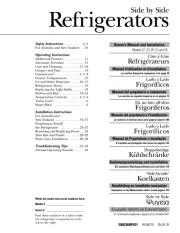
9 September 2025
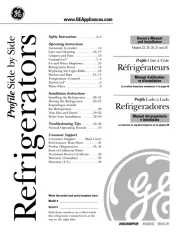
9 September 2025
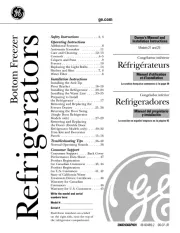
9 September 2025
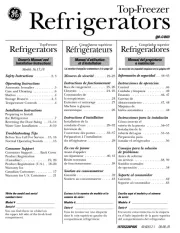
9 September 2025
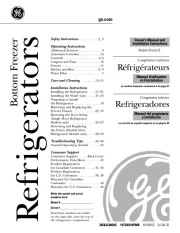
9 September 2025
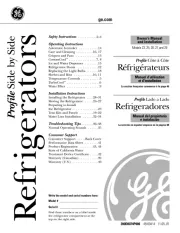
9 September 2025
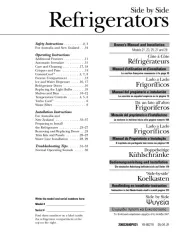
9 September 2025
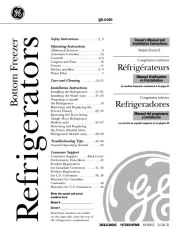
9 September 2025
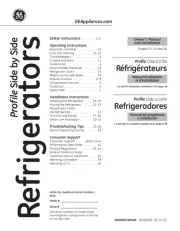
9 September 2025
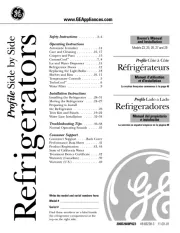
9 September 2025
Handleiding Koelkast
- Sub-Zero
- SIBIR
- Zerowatt
- Federal
- Iris Ohyama
- Nordmende
- Adventure Kings
- Galanz
- Royal Catering
- Brandt
- Le Chai
- Aldi
- Techfrost
- Mestic
- Robinhood
Nieuwste handleidingen voor Koelkast
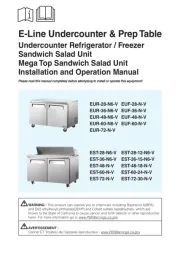
13 September 2025
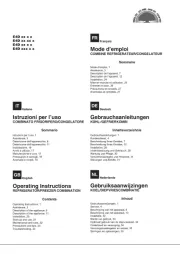
13 September 2025
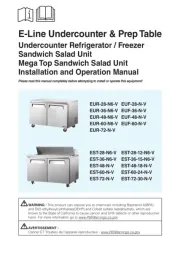
13 September 2025
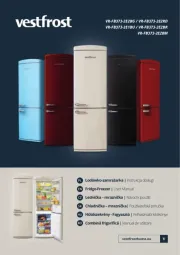
12 September 2025

11 September 2025
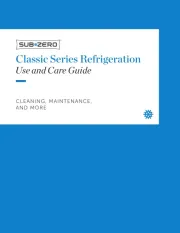
10 September 2025
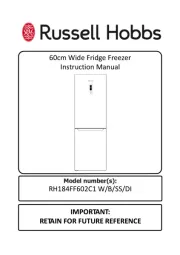
10 September 2025
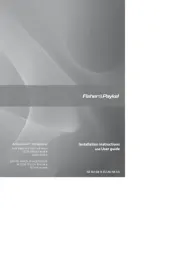
9 September 2025
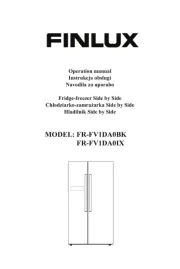
9 September 2025
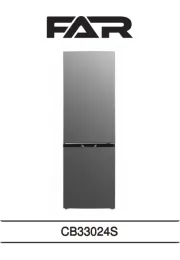
9 September 2025